The Old City (German: Altstadt) is the medieval city center of Bern, Switzerland. Built on a narrow hill bordered on three sides by the river Aare, its compact layout has remained essentially unchanged since its construction during the twelfth to the fifteenth century. Despite a major fire in 1405, after which much of the city was rebuilt in sandstone, and substantial construction efforts in the eighteenth century, Bern's old city has retained its medieval character.
The Old City is home to Switzerland's tallest minster as well as other churches, bridges and a large collection of Renaissance fountains. In addition to many historical buildings, the seats of the federal, cantonal and municipal government are also situated in the Old City. It is a UNESCO Cultural World Heritage Site since 1983 due to the compact and generally intact medieval core and is an excellent example of incorporating the modern world into a medieval ...Read more
The Old City (German: Altstadt) is the medieval city center of Bern, Switzerland. Built on a narrow hill bordered on three sides by the river Aare, its compact layout has remained essentially unchanged since its construction during the twelfth to the fifteenth century. Despite a major fire in 1405, after which much of the city was rebuilt in sandstone, and substantial construction efforts in the eighteenth century, Bern's old city has retained its medieval character.
The Old City is home to Switzerland's tallest minster as well as other churches, bridges and a large collection of Renaissance fountains. In addition to many historical buildings, the seats of the federal, cantonal and municipal government are also situated in the Old City. It is a UNESCO Cultural World Heritage Site since 1983 due to the compact and generally intact medieval core and is an excellent example of incorporating the modern world into a medieval city. Numerous buildings in the Old City have been designated as Swiss Cultural Properties of National Significance, as well as the entire Old City.
 The Aare wraps around the Old City of Bern, pictured here is the old stone bridge at Nydegg
The Aare wraps around the Old City of Bern, pictured here is the old stone bridge at Nydegg
The earliest settlements in the valley of the Aare date back to the Neolithic period. During the second century BC, the valley was settled by the Helvetii. Following the Roman conquest of Helvetia, a small Roman settlement was established near the Old City. This settlement was abandoned during the second century AD. From that time until the founding of Bern the area remained sparsely settled.
Founding Map of the city from 1638 showing the Old City as well as later defensive fortifications to the west.
Map of the city from 1638 showing the Old City as well as later defensive fortifications to the west. An illustration of the Large and Small Redoubts (Schanzen) added from 1622 to 1634
An illustration of the Large and Small Redoubts (Schanzen) added from 1622 to 1634The history of the city of Bern proper begins with its founding by Duke Berchtold V of Zähringen in 1191. Local legend has it that the duke vowed to name the city after the first animal he met on the hunt, which turned out to be a bear.[1] Both the name of the city (Bern can stand for Bär(e) n, bears) and its heraldic beast, come from this legend. At that time, much of today's Switzerland (then considered part of southern Burgundy) was under the authority of the house of Zähringen. The Zähringer leaders, although with no actual duchy of their own, were styled dukes by decree of the German king and exercised imperial power south of the Rhine. To establish their position there, they founded or expanded numerous settlements, including Fribourg (in 1157), Bern, Burgdorf and Morat.[2]
The area chosen by Berchtold V was a hilly peninsula bounded by the Aare on three sides. This location made the city easy to defend and influenced the later development of the city. The long, narrow shape of the peninsula made the city develop as several long, parallel rows of houses. The only major cross streets (going north and south) developed along the city walls, which were moved to allow the city to expand. Therefore, the cross streets mark the stages of development in the Old City of Bern.
On the eastern end of the peninsula a small fort, called Castle Nydegg, was founded by Berchtold IV in the second half of the twelfth century. Either when the fort was built or in 1191, the city of Bern was founded around the eastern end of the peninsula.[3]
First expansion – 1191The first expansion of Bern occurred as the city was founded. Most likely the first city started at Nydegg Castle and reached to the Zytglogge (Swiss German: clock tower). The city was divided by three longitudinal streets, which stretched from the Castle to the city wall. Both the position of the town church and the shape of the eaves were typical for a Zähringer city.[3]
During the first half of the thirteenth century two additional streets (Brunngasse and Herrengasse) were added. Brunngasse was a semi-circular street on the north edge of the city, while Herrengasse was on the south side of the city. A wood bridge was built over the Aare which allowed increased trade and limited settlements on the east bank of the river.
Second expansion – 1255 to 1260During the second half of the thirteenth century, the riverside foundation of Nydegg Castle was strengthened and connected to a new west city wall. This wall was added to protect the four streets, known as the New City or Savoy City, that had sprung up outside the Zytglogge. The new west wall included a gate known as the Käfigturm (German: Prison Tower).
Around 1268 Nydegg Castle was destroyed, and the city expanded into the area formerly occupied by the castle.[3] In the south-east part of the peninsula below the main hill that the rest of the Old City occupied, a section known as Matte grew up.
Third expansion – 1344 to 1346For almost a century the Käfigturm remained the western boundary of Bern. However, as the city grew, people began settling outside the city walls. In 1344 the city started to build a third wall to protect the growing population. By 1346 the project was finished, and six new streets were protected by a wall and the Christoffelturm (German: St. Christopher Tower). The Christoffelturm remained the western border of Bern until the nineteenth century. From 1622 to 1634 a series of defensive walls and strong points were added outside the Christoffelturm. These defensive walls, known as the Grosse Schanze and Kleine Schanze (large and small redoubts respectively) as well as the Schanzegraben (redoubt ditch or moat), were never used as living space for the city, though the Schanzengraben was used for a while to house the Bärengraben.
Great Fire of 1405 Arcade in the Old City of Bern
Arcade in the Old City of BernBern was included in the UNESCO World Heritage Sites because of "an exceptionally coherent planning concept" and because "the medieval town...has retained its original character".[4] Bern owes its coherent planning concept and its famous arcades to a disaster. In 1405 a fire broke out in Bern, which was mostly wooden buildings at the time. The fire raced through the city and destroyed most of the buildings in town. In the wake of this disaster, the city was rebuilt with all stone houses in similar medieval styles. The arcades were added throughout the fifteenth century as houses expanded in the upper stories out into the street. Throughout the next three centuries houses were modified, but the essential elements (stone construction, arcades) remained.
In the sixteenth century, as Bern became a powerful and rich city-state, public fountains were added to Bern. A number of fountains were topped with large allegorical statues, eleven of which are still visible in the city. The fountains served to show the power and wealth of the city,[5] as well as providing fresh water for the citizens of the city. Overall, the city remained nearly unchanged for the next two centuries.
Expansion and destruction of the Christoffelturm The Christoffelturm about 5 years before its removal
The Christoffelturm about 5 years before its removalBy the early nineteenth century, Bern had expanded as far as it could within the old city walls. An increasing number of people were living outside the city walls in neighbouring communities. Throughout the nineteenth century, this ring of modern cities grew up around the Old City without forcing it to demolish the medieval city core. However, the growth around the Old City did lead to several projects.
Within the Old City of Bern, many of the old stone buildings were renovated without changing the outer appearance. The bell tower was finally finished on the Münster (German: Minister or Cathedral), making it the tallest church in Switzerland. A new bridge was built across the Aare at Nydegg in 1842 to 1844. The new bridge was larger than the, still standing, old bridge, called Untertorbrücke, which had been built in 1461 to 1487.
One of the biggest projects was the proposed destruction of the Christoffelturm to open up the west end of the city. Following a very close vote, the decision to remove the Christoffelturm and city wall was made on 15 December 1864. In the spring of the following year Gottlieb Ott led the team that removed the tower. Currently, the former location of the Christoffelturm is a large road interchange, a major bus station and the central train station.
Federal Capital in the twentieth century The north face of the Parliament Building showing the connection to the two flanking Bundesrathaus
The north face of the Parliament Building showing the connection to the two flanking BundesrathausFollowing the Sonderbundskrieg (German: Separate Alliance War) in 1847, Switzerland established a federal constitution and Bern was chosen as the capital of the new Federal State. The vote to make Bern the federal city was met with little enthusiasm (419 vs 313 votes) in Bern[6] due to concerns over the cost. The first Bundesrathaus or Parliament House was built in 1852–1857 by the city of Bern in a New-Renaissance style. The mirror image Bundeshaus Ost (East Federal Building) was built in 1884–1892. Then, in 1894–1902 the domed Parlamentsgebäude or Parliament Building was built between the other two buildings.[7] The three parliament buildings represent the majority of the new, federal construction in the Old City. Most of the other buildings that come with a national capital were placed outside the Old City or were incorporated into existing buildings.
For centuries the famous Bärengraben (German: Bear Pits) were located in the Old City. According to the Bernese historian Valerius Anshelm, the first bears were kept on Bärenplatz (German: Bears' Plaza) in 1513.[1] They were moved from the modern Bärenplatz to the Schanzengraben near the former Christoffelturm in 1764. However, the bears remained in the Old City until the expansion of the new capital forced them out. The bears and the Bärengraben were moved from the Old City across the Aare on 27 May 1857.[1]
In the twentieth century, Bern has had to deal with incorporating the modern world into a medieval city. The plaza where the Christoffelturm used to be, has become the central bus stop for the city. The main train station was built under the plaza, and actually includes some of the foundations from the Christoffelturm and wall in the train station. However, one of the biggest challenges has been integrating automobile traffic into the Old City. Due to the number of important buildings in the Old City and the central location of the Old City, it was impossible to completely close off this area to vehicles. While some streets have remained pedestrian zones, most major streets carry city buses, trams or personal vehicles.
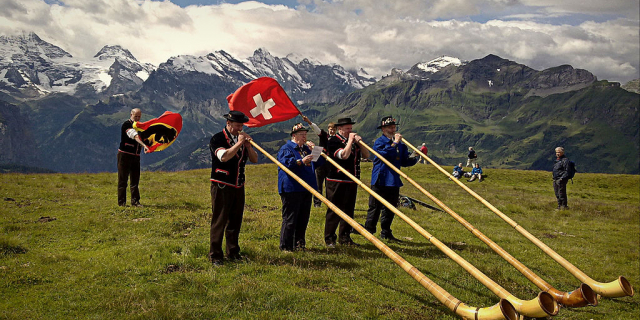





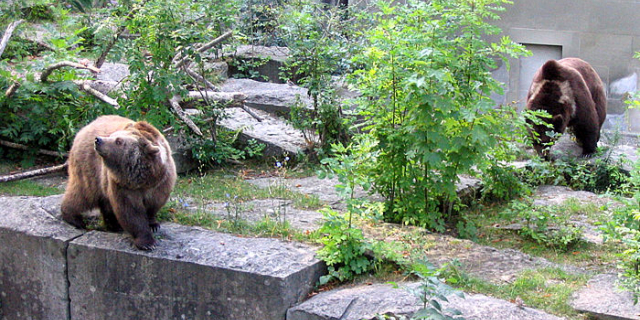







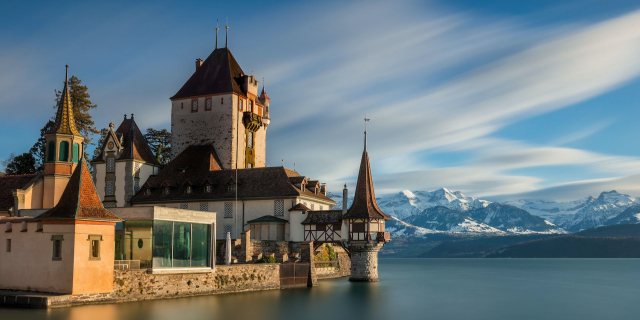


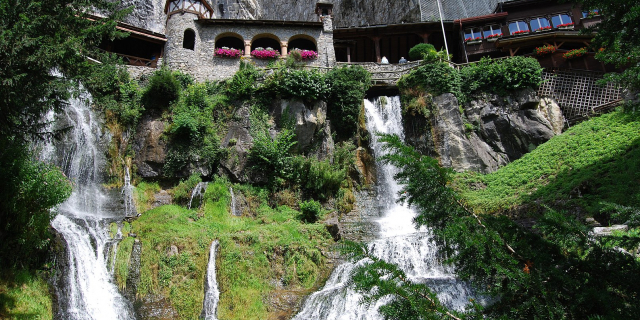














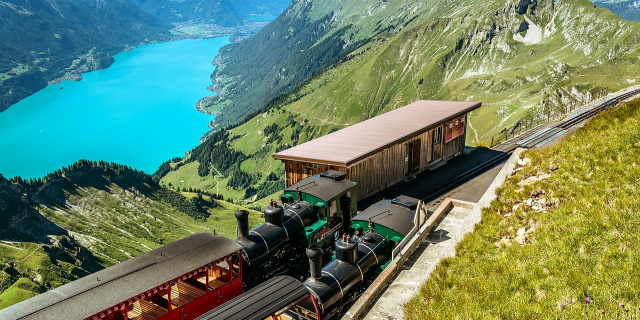




Add new comment